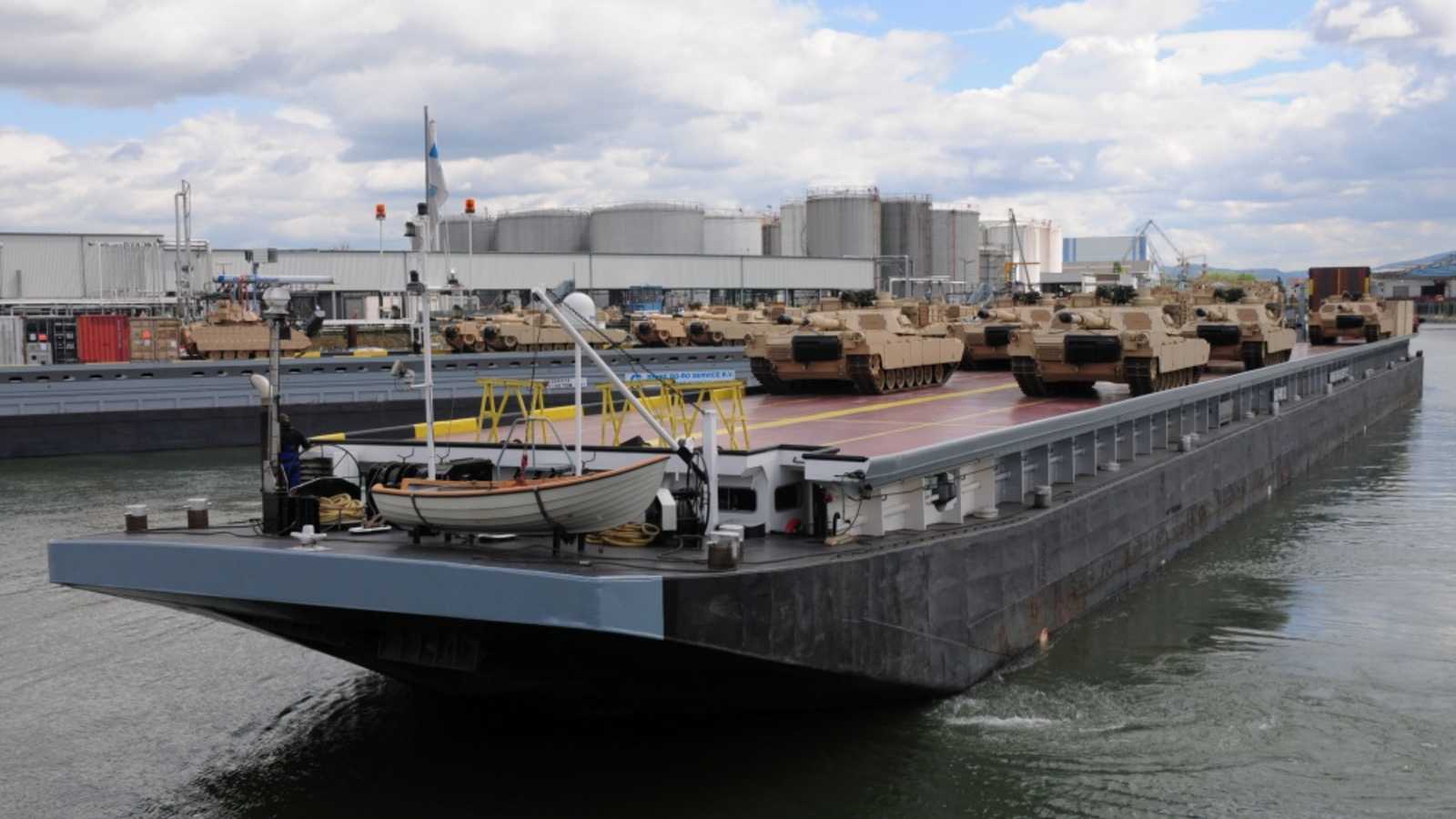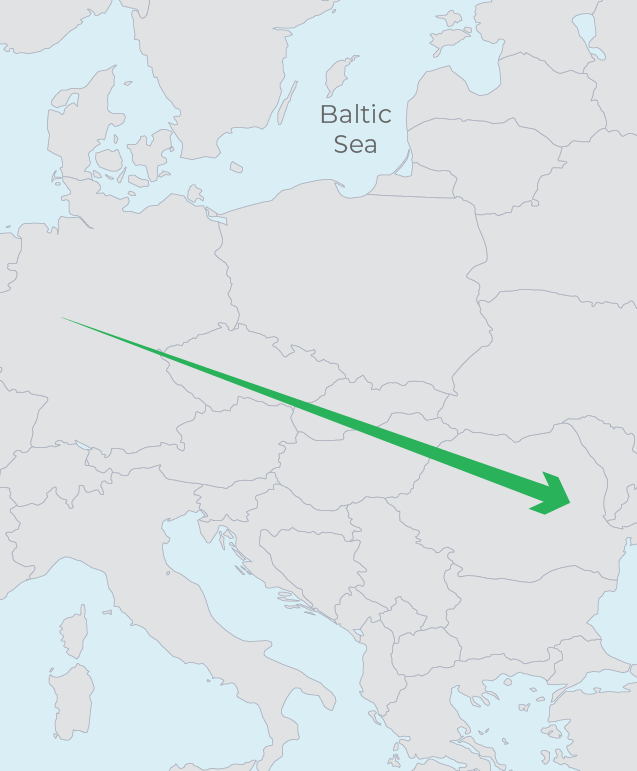WP Post Author
Heinrich Brauss
WP Post Author
WP Post Author
Julian Lindley-French
March 3, 2021
Key Terrain in NATO’s Southeastern Region
Certainty of mobility is the twin of speedy mobility. These twin certainties were tested to the limit in this scenario focused on southeastern Europe and the Black Sea Region. To enhance the cross-border transit of military forces, NATO needs to intensify its efforts to standardize rules/requirements among members and non-member EU nations. A harmonizing body needs to be established to gather data for coherent information sharing with NATO, EU, the private sector, and all stakeholders in effective military mobility, particularly in regions where access is severely constrained due to outdated road and rail networks. In this scenario, an estimated 20 brigades would be required to defeat a Russian attack and would require 20 million liters of diesel fuel and more than 12,000 tons of ammunition to be moved to fight the initial battle. Critically, this scenario highlighted the need for extensive combat support service (CSS) enablers, such as transport maintenance and bridging equipment. The overall assessment was that any movement in strength would take a very long time and because of that any and all military mobility should be carefully planned in advance.
Dealing with Legal/Diplomatic Standards
Civil emergency planning: In keeping with all the scenarios, the need for standardized border regulations and customs forms was highlighted together with a common European system of civil emergency planning. The European Defense Agency (EDA) is currently working to harmonize these procedures and it would be useful to build on the EU Action Plan by establishing a Europe-wide legal framework for border crossing that extends to troop, equipment, ammunition, and fuel movements into Romania in particular.
EU capabilities: Greater leverage needs to be made of EU capabilities, and improved harmonization is needed between them. EU member states are currently running eight relatively low-level programs designed to optimize cross-border movement procedures. These issues need to be gripped at a more strategic and political level, leading to both friction and gaps. For example, there are two sets of Technical Arrangements (TAs) for surface and air domains, but the maritime domain is missing. The EDA is also trying to reduce the “move time” from seven to five working days for task forces at high readiness with logistic planning established in advance, in conjunction with efforts to resolve in advance any customs obstacles faced during the pre-crisis phase for the prepositioning of ammunition and other logistic assets. The EDA has also established a program to revise European customs law to create a legal basis for the harmonization of regulations across all 27 EU member states.

Photo: M1 Abrams crossing a wet gap bridge. Credit: Acrow Corporation of America/ Oshkosh Defense
Managing Infrastructure Requirements and Standards
Supply and resupply: Ammunition stocks and petroleum, oil, and lubricants (POL) would need to be moved to where they are needed, which could prove difficult given the poor and outdated transport networks across the region. There are also insufficient pre-positioned stocks while the stocks that would be needed could not be pre-positioned in all the required locations. Ammunition and POL could be moved by sea but getting from port to the battlefront by road and rail still requires moving hazardous materials through population centers via inadequate and insecure road and rail corridors.
Land movements: The scenario paid particular attention to the problems associated with the movement of forces over land into the AOR. Particular attention was paid to the need to find rail corridors capable of transporting heavy equipment and the need to plan for alternative routes if bridges were targeted, even if this meant forces disembarking in Greece diverting via Poland. The example was highlighted of an Italian division using the Greek ports and rail system to transit through Bulgaria and into Romania. The deployment of Italian forces to Kosovo provided some useful lessons about the likely problems. For example, a force moving by rail via Skopje would need to detrain early because of gauge restrictions with tunnels and bridge clearances. There were also considerable concerns about the Ruse Bridge over the Danube River. If it is destroyed, it would act as a single catastrophic point of failure which could bring any force movement to a halt. A new railway crossing should thus be constructed. In any case, the need for rail ferries on the lower Danube should be a mandatory part of any strategic defense planning in Romania, not just as a national requirement, but also as an Alliance requirement. An infrastructure fund should be developed to build barges capable of creating pontoon bridges across the Danube and transporting rail vehicles when bridges have been destroyed.
Choke points and vulnerabilities: A proper assessment of critical intermodal choke points and vulnerabilities is needed. Such an effort would require a detailed, in-depth series of onsite measurements and route analysis to assess the reliability of rail, particularly in Bulgaria, not least because of problems associated with electricity supply and the type of voltage used by Bulgarian rail. Sea lift would be facilitated by the 11 ships dedicated to the movement of NATO forces, assuming they were available. The Port of Thessaloniki would be the most capable port of entry due to its berthing capacity. However, Russian influence over the ownership of the port suggests that NATO should also look to use Alexandroupolis Port in Thrace. Interestingly, the United States has already taken steps to mitigate the threat posed by Russian influence over critical infrastructure in the region.
Innovative transportation solutions: Given the many constraints, innovative transportation solutions should be considered. For example, it might be possible to use large trucks to move heavy equipment and bulk supplies (such as fuel) to bridges and tunnels where weight and gauge restrictions apply. Thereafter, use smaller trucks to move loads onward. The use of multiple trucks fitted with cranes could also help ease challenges posed by bridge weight limits and would require minimal personnel. Most likely, an emergency in the region would require a mix of air, land, and sea lift solutions, subject to the political approval to cross borders being granted early in the pre-crisis phase.
Secure routing into theater: Consideration was also given to finding the most secure routes. For example, the Poland-Ukraine (Lviv)-Romania route would probably be the most secure prior to any fighting in Romania, while the Greece-Bulgaria-Romania route would probably be the only land route available once a conflict has broken out. Contracting out to the civilian haulage sector could ensure and assure strategic lift across the 1,200 or so miles from Poland to the Focșani Gate prior to a conflict, although there would be significant associated costs such as hire and insurance. Moving by rail across such a large distance is unlikely to be possible unless such movements are made well in advance of an emergency.
Romania’s infrastructure: The scenario also highlighted the paucity and poor quality of much of the infrastructure in the region. Romania is in need of major improvements to its air, road, river, and rail infrastructure. Its road infrastructure is unsuitable at present for large deployments of forces due to narrow roads, weak bridges that would be unable to support large and heavy vehicles, and narrow tunnels. There are also several river crossings in Romania where bridges cannot support armor (the Focșani and Galați bridges being the exception). Romania does have airfields that could be used by large aircraft to transport a spearhead force, such as the Very High Readiness Joint Task Force (VJTF). The Danube is a major thoroughfare but needs more ports of entry to be constructed and infrastructure improved along the length of the river from Germany to the Black Sea. If the Danube is to be exploited as a corridor for mobility, ferries on the river could provide a logistical reserve capability and should be developed by both Romania and Bulgaria. The Romanian rail system would be unable to transport a huge tonnage of equipment via rail, but could transport some military equipment at a relatively high speed.
Work with national planning: Any deployment and mobility plans to the Focşani Gate must also account for Romania’s existing strategic plans, including the National Defense Strategy (RoNDS) for 2020-2024, Romania’s Defense Strategic Assessment (RoDSA) for 2020-2040, and the revised final version of the General Master Plan on Transport (GMPT). The GMPT was revised in December 2021 by an interinstitutional working group that included civilian and military stakeholders and took into consideration EDA and NATO military mobility requirements.
Sources of infrastructure investment: The updated GPMT also assumes access to the now very limited EU military mobility budget, as well as the Three Seas Initiative (3SI) transport priority project and the Three Seas Initiative (3SI) Investment Fund. As such, the GMPT might prove a useful test case for best practice military mobility planning in the region and might have lessons that could be applied elsewhere in Europe.
Serbia, the Danube, and “smart TEN-T”: Romania could provide a critical pathway for developing cooperation between the European Union (EU) and Serbia with the aim of boosting the importance of the Danube for commercial activity and, as a consequence, fostering improved military mobility. The region would also benefit if the Trans-European Transport Network (TEN-T) and other corridors were adapted for enabling the transport of “oversized” military assets. At the EU level, there is only knowledge of such requirements (which are not met across all EU member states in spite of existing legislation). Therefore, an audit should be undertaken of all infrastructure to test for accommodation of “oversized” military assets. In some circumstances, it might still be possible to move such assets using mitigation measures. The EU is also promoting the streamlining of procedures for building infrastructure across the Union. This is important legislation and transport and military communities in the region should seek to exploit it by both sharing knowledge and expertise and promoting a joint approach to developing the case for funding.
Rail interfaces: There is a need to standardize railways and their gauges and weight capacity across the region. To that end, a working group should be established within the framework of enhancing military mobility to evaluate existing railway standards and reassess the degree of interoperability on European railways currently based on so-called Technical Specifications for Interoperability (TSIs). In theory, all EU member states must answer to the TSIs based on the EDA and the European Commission’s Directorate-General for Mobility and Transport (DG MOVE) requirements. However, railway lines in several EU countries have different gauge widths, while the gauge in Ukraine and Moldova is 1,520 mm and thus conforms to Russian standards. This presents a real challenge for military mobility on NATO’s eastern flank. In the short to medium term, increased investment in so-called transition technologies could also be made to facilitate the transfer of shipments from one gauge to another. Both the Russians and the Swiss have developed the technology to rapidly change bogies on railway wagons to avoid the need to unload and reload rolling stock. The Swiss have a bespoke system to facilitate changing the bogies on flat-bed wagons from standard to narrow gauge.

Photo: M1A1 Abrams tanks offloaded from the Rhine River in Mannheim. Credit: Courtesy Photo
Determining Chains of Command, Control, and Communication
Promote decision-making: Promoting political decision-making at the “speed of crisis relevance” to initiate and enable military mobility was highlighted. And, while the EU clearly has a major role to play in promoting more political coherence, NATO must be the driving force concerning requirements.
Exercising and training: The need for more shared operational military training and exercises to safeguard command and control was also identified, with calls for a systematic program of EU-NATO civil-military exercises that would help construct a shared civil-military understanding of the challenges faced by military mobility, ensure staff are better trained, and build cohesion among stakeholders.
Equipment movement: There is also a need to better coordinate the numerous mobility stakeholders involved in equipment and ammunition movement. To that end NATO and the EU should jointly bring together regional transport authorities. Increased coordination among NATO, the EU, and the member states is thus vital. It must be further reinforced by a whole-of-government approach to mobility. Critically, there is no single coordinating authority, although NATO is moving to enable whole-of-government efforts across Europe and has a rolling database to assist in the process. However, as it is developed it should also be shared with the EU and partner governments, not just allies.
Anticipating Risks to Security
Big-picture approach: To ease threats to the security of transiting forces a holistic “big-picture” approach is needed to scenario planning that incorporates critical infrastructure preparedness, offensive cyber operations, effects on local populations, disruptions to lines of communication, and other actions which could create confusion and impact the speed of movement and act as a barrier to rapid political decision-making.
Civil unrest: Preparedness for civil unrest should also be an integral part of the planning remit, together with possible large-scale population movements, all of which would further limit the already limited road and rail capacity in the region. While alternative civilian logistic capacity is attractive as a solution, it could also be vulnerable to Russian New Generation Warfare. For example, Russia has successfully penetrated the political systems of Hungary and Serbia and trains carrying troops and equipment across those states could be interfered with. Forces disembarking in Greece could also have difficulty transiting through Bulgaria.
Lack of airborne fire support: Secure military mobility in the region needs the support of airborne fire support platforms such as attack helicopters and U.S. Army aviation, which are critical combat multipliers. An aviation brigade is capable of self-deploying for at least 48-72 hours, supporting elements and movement coming out of Germany and Poland, forward deploying, and providing mobility and strike capability. Its Longbow radar can detect enemy at ranges of 16 kilometers and distribute this targeting data to any Link 16-capable fire system
Scenario 3: Focsani Gate

NEXT APPENDIX
LEARN MORE
PREVIOUS APPENDIX
LEARN MORE








